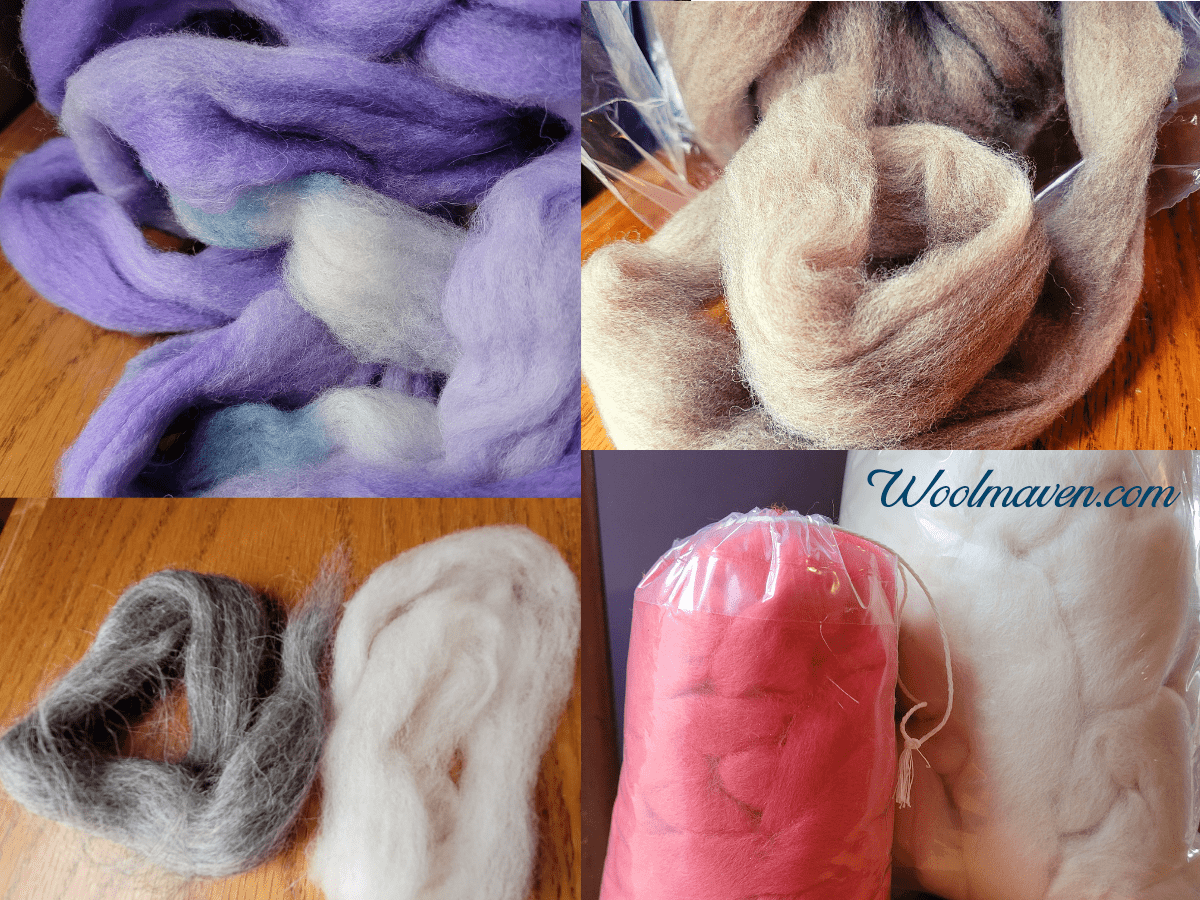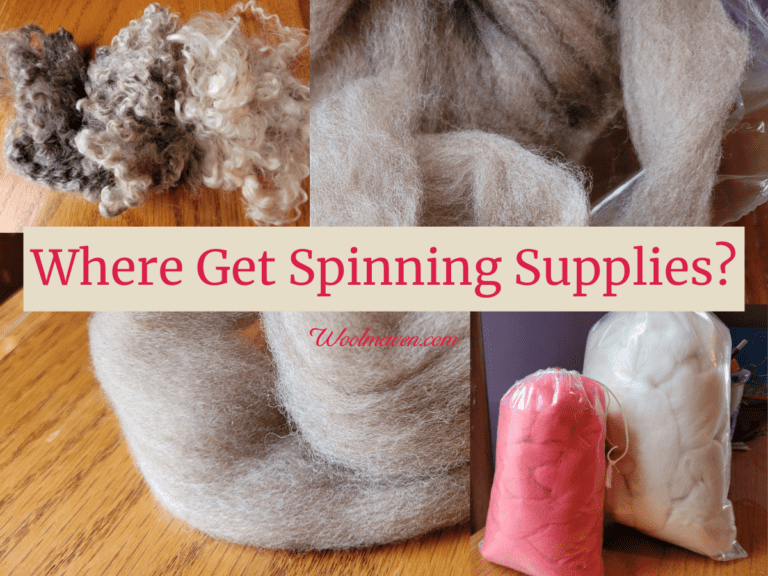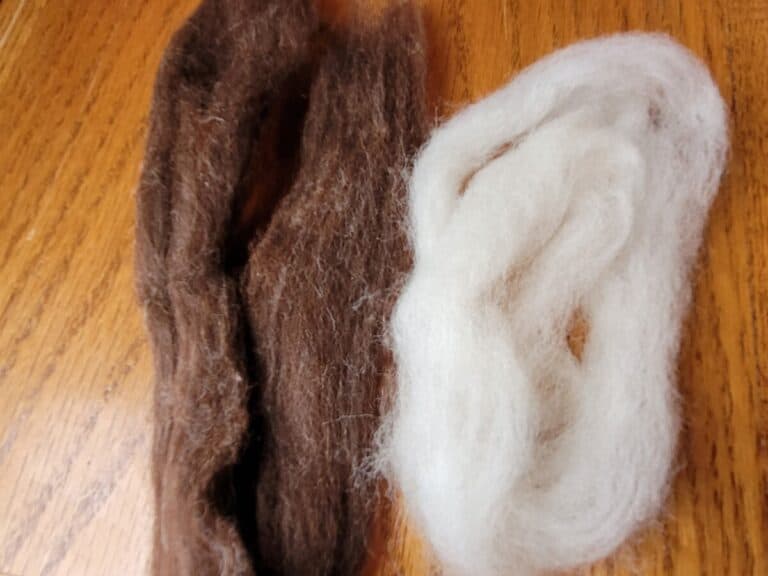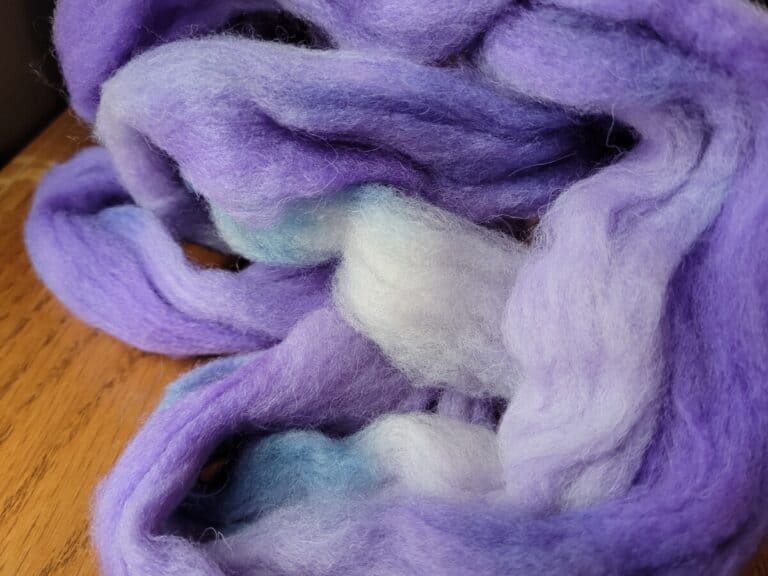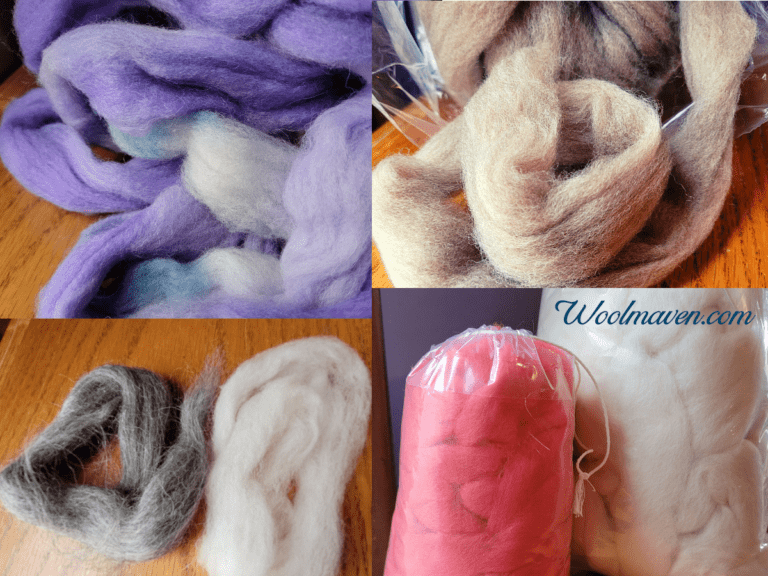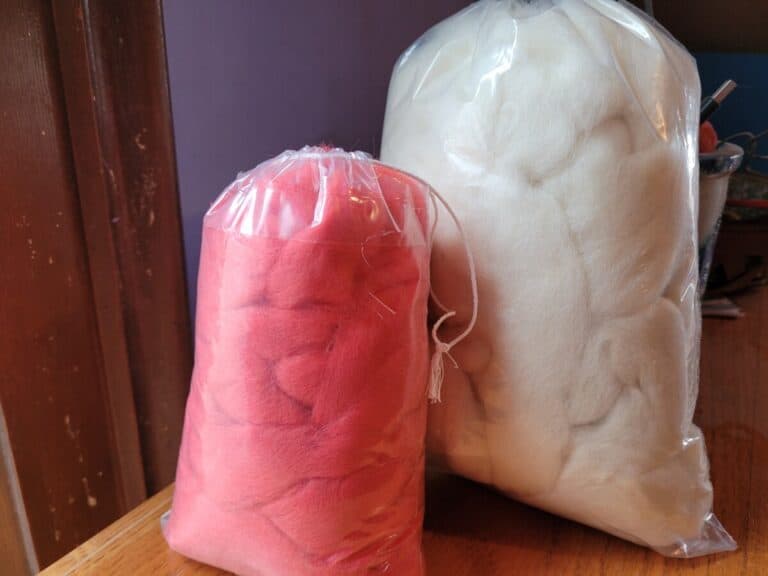Should Handspinners Use Wool Roving?
When you are looking to start handspinning, you will see that there are all kinds of fiber choices, including but certainly not limited to wool roving! Should you as a new handspinner, use wool roving?
Wool roving is the easiest fiber to use when you learn to spin. It is also easy to find. Wool is a renewable resource, the purchase of which supports farmers and specialty shop owners.
How To Spin Wool Roving gives you the tips and tricks you need to get the yarn you are hoping for from your roving!
Handspinners can use wool roving
Wool roving commonly used by handspinners and is the most popular fiber preparation to handspin, since it is easy to work with, clean and will be even from end to end giving you a consistent yarn.
When most folks say wool roving what they actually mean is any prepared fiber that is ready to spin, not that the fiber they are working with is actually true roving, since true roving is prepared a specific way.
The fiber preparation most commonly used, despite being called roving, is actually combed top. This means that the wool fibers have gone through additional steps to make them aligned and smooth.
True roving has fibers that run in all different directions and the rope of fiber looks fluffy. With combed top the rope of fiber looks smooth and more compact.
How Much Does It Cost To Spin Wool? gives you a cost breakdown of spinning yarn, including buying your basic equipment and fibers.
Animal fiber rovings are self renewing resources
Another aspect of wool roving that you may not have considered is that wool or other animal fiber rovings are self renewing, meaning the base fibers keep being produced for as long as the animal is alive.
No extra anything needs to be added to the wool sheep’s diet to get her to produce wool, she grows wool naturally, just like you grow your hair. The same goes for alpacas, angora rabbits, angora goats, etc.
Shearing the fiber animal is good for the animal, itself. During shearing the sheep, for example, gets a full body exam to make sure she looks good and is in good shape.
Additionally, for the fiber animal some wool is good, it insulates the sheep, but have too much wool and she can get matts, just like an ungroomed dog. Shearing fixes this and gives her a clean start.
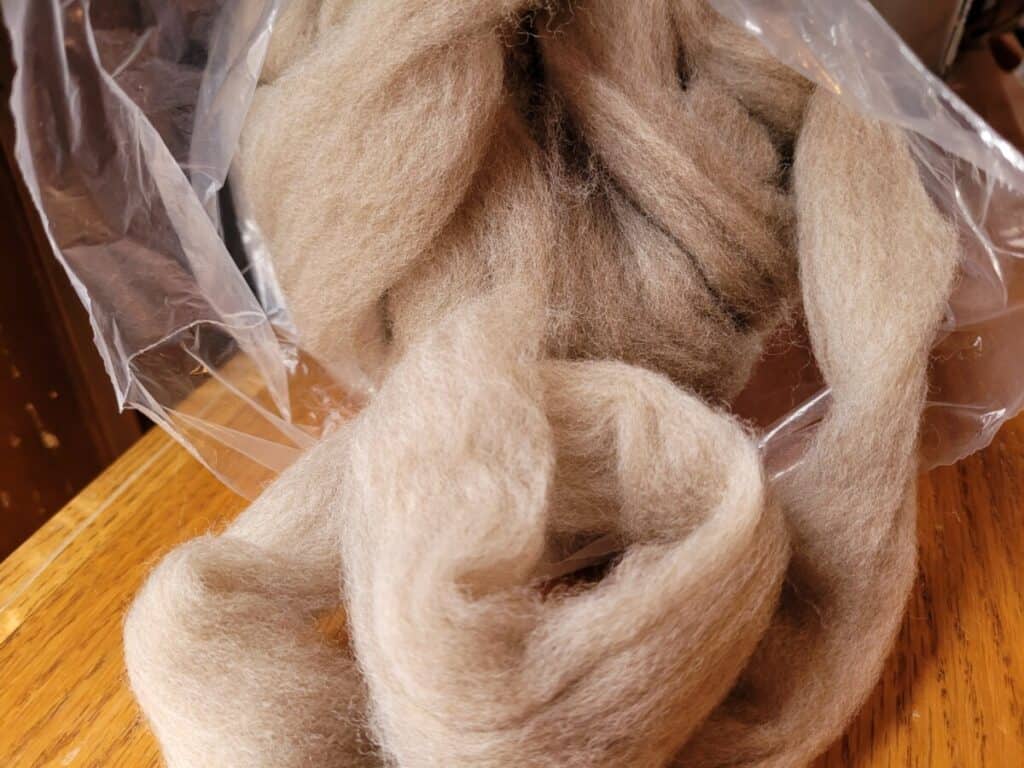
Spinning with wool roving supports small business owners
Using wool roving for your handspinning supports the farmers, shearers, custom fiber mills and shop owners who all have different rolls in providing you the roving you love to spin.
Buying wool roving from small businesses puts your money into the hands of craftsmen, from the shop owner to the shepherd, who are producing a diverse array of high quality fiber.
I love the fact that I can order fiber directly from the shepherd who processed her own fleeces!
That’s a wonderful way for me to get great roving and for folks raising the fleeces we love to spin to be paid according to their own pricing structure.
What fibers can be made into roving for handspinning?
Just about any wool or other fiber for spinning can be put into roving to be spun by itself or mixed in with other spinnable fibers in a blended roving.
Some of the sources of spinnable fiber rovings are:
- fine wool sheep
- medium wool sheep
- long wool sheep
- alpaca
- llama
- angora rabbit
- mohair from angora goats
- yak hair
- cashmere
- plant fibers, like mint or bamboo
- silk
There are more potential spinnable fibers, this is just a list off the top of my head.
Some spinnable fibers are harder to spin than others
If you glance back at the list of spinnable fibers, you’ll notice that not all of the fibers will be animal sourced and some of the animal sourced fibers are not wool, they are hair, which is harder to spin.
The reason hair or any spinnable fiber would be harder to spin than wool is that these non wool fibers are straight and slippery, they do not grab onto one another as you spin, like wool.
Wool has crimp, from a little in long wools to a lot in finer wools, which are the kinks in the individual fiber that help it hold together in your spinning.
If you are a beginner, start with a Corriedale roving and branch out to other more challenging rovings when you get some practice with your wheel.
Tips for spinning with roving
Not all rovings are the same
Since roving is something of a catch all term for spinnable wool, not all rovings are going to be the same, specifically regarding width.
Some of the rovings you get will be pretty thin, maybe even pencil roving, or more likely, you’ll end up with a roving around the 2-3 inches wide mark.
The thickness doesn’t really matter as long as there is more wool in the roving than you want to put into the yarn, meaning that you’ll have to draft the fiber to get down to the size of yarn you want.
If the roving has less fiber than you want in your yarn, like a really thin pencil roving, then you’ll have to double it up or use another roving for this project instead.
Closely look at the roving
The first thing to do when you get your roving, look it over and see how clean and uniform it is. I mean take some of it out of the bag and really look at it.
If it is actually combed top, it will be very uniform and neatly presented. If it is true roving, it will have fluff and less uniformity if you look closely.
The reason this matters is the fiber preparation is one of the things that determines your final yarn, that and your spinning techniques.
If you are looking to make a very specific yarn, you need to make sure your fiber matches the yarn you want to make.
If you are just wanting to practice your handspinning, then just look over the roving to see how much, if any, noils and VM (vegetable matter) you’ll be working through.
In my experience, combed top is nearly flawless while roving can have little odd bits, like the noils and VM.
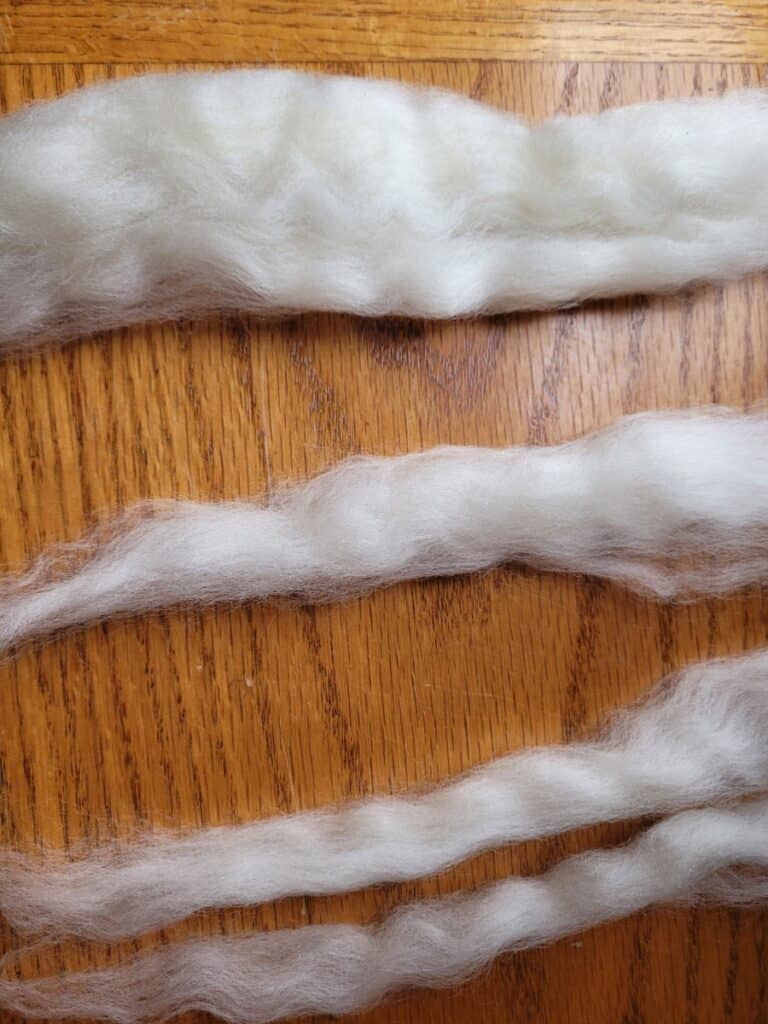
Section off the roving
To get started spinning, section off the roving into workable lengths, I like something along the lines of 1-1.5 feet long.
I grab a section of roving and pull and it will naturally separate somewhere in the middle.
Of course, you can work with the entire roving, as is, but for me it’s awkward and a lot to manage at once, so I section it off into smaller lengths.
If the sections look workable to you, give them a shot and see how spinning goes.
Split the roving into columns
If you tried spinning with the section of roving and find that it is still to bulky for you to easily work with, consider splitting the roving into columns or slivers.
I normally split roving at least in half, but in 4-6 pieces is more common, depending upon what I am working with.
You’ll know quickly if you need to split the roving again, once you start spinning with it.
Currently, I am spinning a pin drafted alpaca and wool roving and have found that it works best for me to split the roving into 8 or more slivers, which takes it down to more in the pencil roving size.
That’s a lot of splitting, but it seems to be what works best for me, since I am having a hard time drafting it out to the diameter I’m shooting for, otherwise.
Start with Corriedale
The easiest wool that I have found to work with is Corriedale.
Once you get going on your spinning and are more comfortable, try some other wools, as well, but definitely start here!
Expand you spinning experience
Try a variety of wools and wool blends and see what you like to work with.
The best part about roving is that you have so many choices and can get smaller amounts to experiment with and see what works for you before making a larger purchase.
For instance, I just got in some Gotland to play around with. It’s truly lovely and knits up very nicely, but a bit too slick for me to enjoy spinning with. If you are a fan of high luster wools, give Gotland a try.
The Joy Of Handspinning has a nice quick overview article on different wool types and their uses for handspinning.

